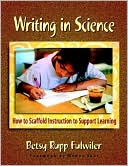Category Books
- Fiction Books & Literature
- Graphic Novels
- Horror
- Mystery & Crime
- Poetry
- Romance Books
- Science Fiction & Fantasy
- Thrillers
- Westerns
- Ages 0-2
- Ages 3-5
- Ages 6-8
- Ages 9-12
- Teens
- Children's Books
- African Americans
- Antiques & Collectibles
- Art, Architecture & Photography
- Bibles & Bible Studies
- Biography
- Business Books
- Christianity
- Computer Books & Technology Books
- Cookbooks, Food & Wine
- Crafts & Hobbies Books
- Education & Teaching
- Engineering
- Entertainment
- Foreign Languages
- Game Books
- Gay & Lesbian
- Health Books, Diet & Fitness Books
- History
- Home & Garden
- Humor Books
- Judaism & Judaica
- Law
- Medical Books
- New Age & Spirituality
- Nonfiction
- Parenting & Family
- Pets
- Philosophy
- Political Books & Current Events Books
- Psychology & Psychotherapy
- Reference
- Religion Books
- Science & Nature
- Self Improvement
- Sex & Relationships
- Social Sciences
- Sports & Adventure
- Study Guides & Test Prep
- Travel
- True Crime
- Weddings
- Women's Studies
Writing in Science: How to Scaffold Instruction to Support Learning » (1st Edition)

Authors: Betsy Rupp Fulwiler, Betsy Rupp Fulwiler, Wendy Saul
ISBN-13: 9780325010700, ISBN-10: 0325010706
Format: Paperback
Publisher: Heinemann
Date Published: March 2007
Edition: 1st Edition
Author Biography: Betsy Rupp Fulwiler
Book Synopsis
In the science classroom writing is much more than an exercise for students to document their steps during an investigation. It s an important vehicle for describing their thought processes and the evidence that supports their reasoning. Writing in Science shows you how to encourage students to grow as scientists and writers by moving beyond recounting how they completed their work and toward explaining what they learned.
Writing in Science shares proven methods for supporting improvement in how students write and think about science. It provides practical guidelines for using science notebooks in grades K-5 to teach and assess science writing in a way that develops students conceptual knowledge and expository writing abilities as well as their thinking and scientific skills. Betsy Rupp Fulwiler shares strategies for scaffolding and modeling higher-level forms of scientific writing such as:
- observations
- cause and effect
- comparisons
- data analysis
- conclusions.
Fulwiler packs Writing in Science with numerous illustrations and tools to get you started, including:
- more than 50 entries from science notebooks, annotated with remarks about instruction and formative assessment
- scientific writing from English language learners and special-needs students
- examples and focus questions that apply to 18 popular units from the widely used STC, FOSS, and Insights kits
- 17 blackline masters of graphic organizers and writing frameworks
- specific assessment protocols and guidelines to help you analyze notebook entries and provide constructive, formative feedback to students
- planning guidelines that explain how to develop writing curricula for science units.
Best of all, Fulwiler s methods are not only backed by research but have also been successfully implemented in the Seattle Public Schools.
Help students develop their scientific thinking in an incredibly effective way: by writing. Push them away from detailing procedures and into writing that helps them grow as writers, scientific thinkers, and learners. And do it all while meeting inquiry-based science goals and supporting writing instruction across the content areas. Read Writing in Science--you ll discover that pencil and paper are among the most important materials in any scientific experiment.
Table of Contents
Foreword Wendy Saul ix
Acknowledgments xi
Introduction xv
Understanding the Basics of This Integrated Science-Writing Approach and What Research Says About It 1
Using Science Notebooks in Integrating Science and Expository Writing Instruction 12
Developing and Organizing Scientific Understanding and Thinking: Science Word Banks and Graphic Organizers 28
Teaching Simple Forms of Scientific Thinking and Expository Writing: Observations, Cause and Effect, and Comparisons 44
Teaching Complex Forms of Scientific Thinking and Expository Writing: Reasoning, Data Analysis, and Conclusions 81
Assessing Science Notebook Entries 113
Planning Expository Writing Instruction for a Science Unit 133
Twelve Tips for Implementing This Integrated Science-Writing Approach 147
Blackline Masters for Graphic Organizers and Writing Frames 151
A First Grader's Complete Science Notebook 170
Resources for Inquiry-Based Science Units 190
Focus and Investigative Questions for Inquiry-Based Science Units 191
Subjects
 Teaching & Teacher Training
Teaching & Teacher Training  Teaching - Science & Technology
Teaching - Science & TechnologyScience & Nature
 Reference & Textbooks
Reference & Textbooks  Study & Teaching of Science
Study & Teaching of ScienceScience & Nature
 All Science & Nature
All Science & Nature  Science Reference
Science ReferenceNonfiction
 Science & Nature
Science & Nature  Reference & Textbooks
Reference & TextbooksNonfiction
 Science & Nature
Science & Nature  All Science & Nature
All Science & Nature
